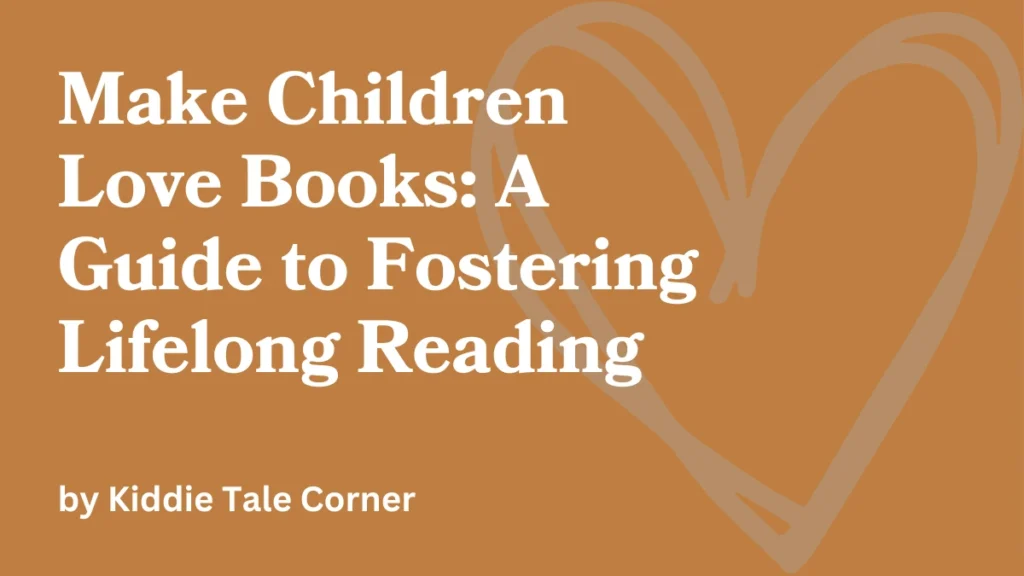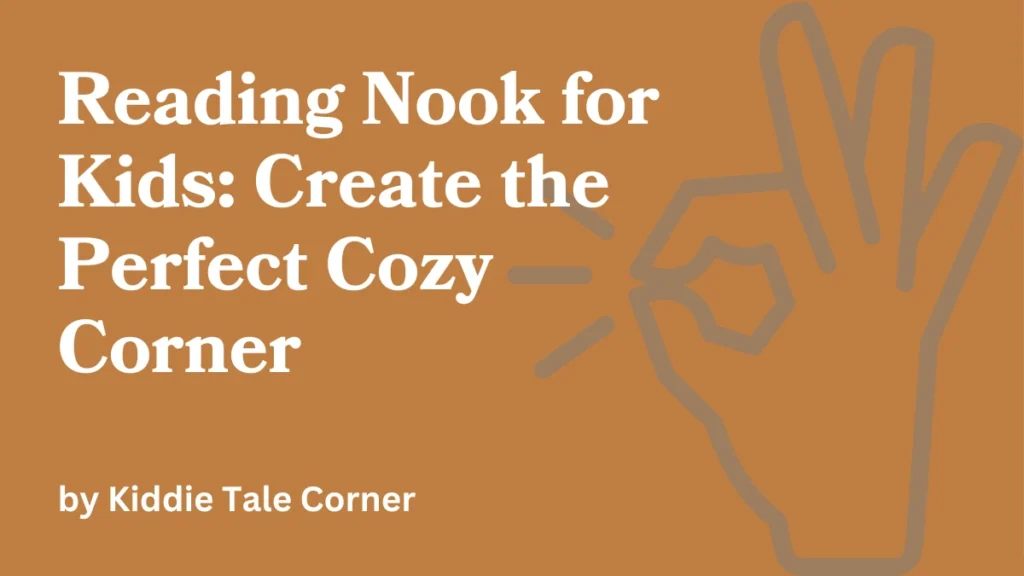Did you know that kids who engage in regular storytime routines for kids benefit from improved language skills and a stronger emotional bond with their caregivers? Establishing a storytime routine for kids isn’t just about reading—it’s an unstructured adventure in nurturing imagination, where hands clap and motions create lifelong memories. Whether it’s the giggle-filled moments of a silly picture book or the quiet wonder of a fairy tale, these rituals become cherished parts of childhood. Simple words weave magical worlds where young minds soar, fostering growth, empathy, and joy. Let’s dive into how you can craft this special time to enrich your child’s day—and your own.
Crafting the Storytime Foundation
Routine Essentials
To build a strong storytime routine, set a specific time each day. This helps kids know when to expect their beloved stories. It could be after dinner or before bed. Next, choose a comfortable spot where you and your child can relax without interruptions. This might be a corner in the living room or on their bed surrounded by stuffed animals.
Before starting, gather everything you need for storytime:
-
A selection of books
-
Props like puppets or toys related to the story
-
Blankets for comfort
Having these items ready makes sure nothing disrupts your reading time together.
Structured Sessions
Each session should have a clear story arc: beginning, middle, and end. Start with an introduction that grabs attention. The middle is where most of the action happens – maybe with twists and turns! End with a satisfying conclusion that wraps up the tale.
Mix up silent reading with talking about pictures or parts of the story. Ask questions like “What do you think will happen next?” This keeps it fun and interactive.
Set goals for each session too:
-
Learning new words.
-
Understanding the lesson behind the story.
-
Enjoying shared moments between parent and child.
These goals give purpose to your sessions beyond just hearing a story.
Environment Setup
Create an inviting environment free from distractions like TV or loud noises outside. Turn off gadgets so they don’t tempt anyone away from book-time magic!

Make sure there’s enough light to see clearly but not so bright it feels harsh—soft lamp light often works well here.
Lastly, make things extra cozy:
-
Pile up cushions on the floor.
-
Lay down soft blankets.
-
Maybe even build a fort as an exciting place to read!
A comfortable space invites children into wonderful worlds found within books’ pages.
Selecting the Right Stories
Age-Appropriate Books
Choosing stories that fit a child’s age is key. Younger kids need simpler words. Older children can handle more complex tales. Look for books with just enough challenge to help kids learn new words without getting frustrated.
For little ones, pick books with:
-
Big, colorful pictures.
-
Large print.
-
Simple plots.
As they grow, introduce stories that match their changing world. School-aged kids might like tales about friendship or adventure. Always check if the book is right for their age before you choose it.
Books are not just about reading; they’re also about understanding life better. A story about sharing toys works well for toddlers learning to play with others. A mystery book could be great for an older kid who loves puzzles.
Diverse Themes
It’s wonderful to explore different cultures through books! When you read stories from around the world, children learn about people and places far away from home. This helps them see how big and varied our world is.
Try mixing up what kinds of books you read:
-
Some can be make-believe stories.
-
Others might teach facts about animals or space.
Change themes often to keep things exciting:
-
One week read adventure tales.
-
The next week explore science stories.
This way, your child gets to discover many subjects and interests over time!
Remember these points when picking out diverse themes:
Kids should see themselves in some stories but also meet characters who are very different from them too! They’ll start understanding that every person has their own unique story.
Here’s why diverse themes matter:
-
They open minds to new ideas.
-
Kids learn empathy by seeing life through someone else’s eyes.
Storytime Scheduling Strategies
Consistency is Key
A storytime routine works best when it happens every day. Kids like knowing what to expect. So, try to read stories at the same time each day. This helps your child feel secure and happy.
It’s also good to do things in the same order during storytime. Maybe you start with a welcome song, then read a book, and end with a quiet chat about the story. These steps become signs for kids that storytime is starting or ending.
Here are some tips for consistent cues:
-
Start with a special hello.
-
Sit in the same cozy spot each time.
-
Finish by asking about their favorite part of the story.
These cues make it clear when it’s time to listen and when it’s over. It makes saying goodbye to playtime easier too!
Timing and Duration
Storytimes should not be too long because kids can’t pay attention for very long times. A few minutes might be enough for little ones, while older kids can enjoy longer stories.
The best time for reading is when your child feels awake and ready to learn new things. For many children, this could be after breakfast or before bed.
But remember! Some days they might want more or less time reading—and that’s okay! Here’s how you can adjust:
-
If they’re extra interested, read another chapter or pick an additional short tale.
-
When they seem restless, it’s fine to stop early.
Engaging the Young Audience
Repetitive Elements
Kids love things that are familiar to them. Repetitive elements in stories make them feel safe and excited. They know what to expect next. This can be a special phrase or a funny character they get to meet in every story.
One way is to start with a song intro that kids can sing along with. Or you could have a character who always says hello in the same silly way. Kids look forward to these moments and might even join in.
Another idea is using stories with patterns, like the “three little pigs” where each pig builds a house. This repetition helps children guess what may happen next, which keeps their attention locked on the story.
-
Recurring phrases create comfort.
-
Song intros add fun.
-
Character greetings build connection.
-
Predictable patterns engage curiosity.
These elements work because they turn listening into an activity rather than just sitting still. When kids hear something they recognize, they might clap or laugh out loud because it’s like meeting an old friend again.
Interactive Techniques
Talking directly to children during storytime makes it more than just reading; it becomes a conversation. You can ask questions about what’s happening in the book, like “What do you think she will find under the bed?”
Encourage kids to guess what comes next in the tale by asking for predictions: “Do you think he’ll be able to climb that giant beanstalk?” These types of questions help kids use their imaginations.
Using different voices for characters brings them alive! If there’s an old wizard, maybe use a deep slow voice; for a tiny mouse, try making your voice high-pitched and quick! Kids often find this hilarious and engaging.
Remember:
-
Ask open-ended questions.
-
Encourage predictions from listeners.
-
Use expressive voices for storytelling magic.
Enhancing Storytime with Activities
Complementary Crafts
Crafts can make storytime even more fun. When kids listen to a story, they imagine the scenes in their heads. But when they do crafts, they get to bring those scenes to life! Prepare crafts that go along with the story’s theme. For example, if the book is about animals, you could make animal masks.
-
Choose simple projects like coloring pages or paper puppets.
-
Make sure the craft matches what happens in the book.
Doing these activities helps children remember what they read. It’s also a great way for them to show creativity.
Another good tip is to use art projects that highlight parts of the story. Let’s say there’s a brave knight in the tale:
-
Create shields using cardboard and foil.
-
Decorate them with symbols from the adventure.
This way, kids learn by doing something related to the book. They think about details like colors and shapes mentioned in it.
Pick craft activities that are just right for your child’s age:
-
Younger children might enjoy sticking things on paper.
-
Older kids could handle making things out of clay or fabric.
When picking an activity, be sure it won’t be too hard but still challenges them a bit.
Educational Songs
Songs are another awesome tool for making stories stick in our minds. You can find or create songs that match what you’ve been reading about. If your book was set at sea, sing songs about pirates or ocean waves!
Singing helps children learn new words easily because tunes and rhymes are catchy:
-
Use melodies that sound happy or exciting.
-
Change up old nursery rhymes by adding new words from your story.
Songs work well as breaks between books during reading time too:
-
End one tale with a song before starting another.
-
This keeps kids excited and ready for more stories!
Think of music as a bridge connecting different adventures during storytime sessions:
-
Play soft music while turning pages to build suspense.
-
Use lively beats when it’s time for action-packed parts of a story.
Fostering Early Literacy Skills
Literacy Messages
Reading is a powerful tool. It opens doors to new worlds. It’s important for kids to understand this. We can help them see reading as part of everyday life. When we sit down for storytime, let’s show them the title of the book. Let’s talk about what it might mean.
Pointing out headings and captions is also key. These are parts of books that give us clues about stories or facts inside. They help us know what to expect from each page or chapter.
Storytelling does more than entertain; it keeps our history alive. It shares old tales and lessons with new generations. Every culture has stories that have been told for many years.
-
Reading shows us different ways people live.
-
Headings guide us through a book.
-
Stories keep our past close to our hearts.
These points make reading time rich with learning and meaning.
Reading Comprehension
After we read a section, let’s pause for a moment. Let’s ask ourselves: What just happened? Summarizing helps kids remember the story better.
Stories on pages can remind us of things in real life too! Maybe a character had a birthday party like one you went to last week? Making these connections makes reading fun and personal.
Sometimes stories have tricky parts or words we don’t know yet—no problem! We should look up those words right away or explain tough plot twists in simple terms so everyone understands.
By doing these things:
-
Summarize after reading.
-
Connect stories to real-life events.
-
Clarify confusing bits immediately,
we build strong readers who love books!
Interactive Storytelling Methods
Discussion Questions
One way to make storytime special is by asking questions. After reading a book, you can ask kids what they think about the story. This helps them think deeply and understand the message better. For example, if you read a tale about sharing, you could ask, “How do you feel when someone shares with you?” This makes kids reflect on their own feelings.
You can also have them guess what might happen next in the story. It’s fun and gets their brains working hard! Kids love to share ideas during discussions like this. They learn how to listen to others too.
Thematic Storytime Planning
Seasonal Themes
Creating a storytime routine that aligns with the seasons adds excitement and relevance to reading. By choosing books that match the current season or holiday, kids can see their world reflected in the stories. For example, during autumn, you could read about falling leaves and harvest time.
After reading, talk about how these seasonal events show up in real life. This could be noticing how trees change or discussing family traditions for holidays like Halloween or Thanksgiving. It’s not just about the story; it’s connecting it to what they know and see.
Following up with a craft related to the theme can help cement these concepts. If it’s winter, you might make snowflakes after reading a book about snowy adventures. This hands-on activity makes learning fun and memorable.
Cultural Exploration
Diving into different cultures through stories is another powerful tool for thematic planning. Choose books that introduce children to new languages, customs, and ways of living. A tale set in India during Diwali brings vibrant images and new words into their vocabulary.
As you explore these stories together, compare them to your child’s daily life. Ask questions like “How is this different from our neighborhood?” or “What would you do if you were part of this festival?” It encourages empathy and broadens their understanding of diversity.
To bring geography into play, pull out a map or globe after storytime ends. Locate where each story happens around the world – it turns reading time into an impromptu geography lesson! Kids learn that stories are gateways to places they’ve never been before.
Tailoring for Toddlers
Short and Sweet Reads
Toddlers have short attention spans. It’s best to choose books that are brief but packed with meaning. Look for stories that get the point across in a few words. This keeps little ones hooked from start to finish.
A good mix can help, too. You might read a longer story sometimes, but also add in some quick tales during the same sitting. This way, kids stay interested and learning stays fun.
Picture books are great for toddlers as well. They tell most of the tale through images rather than words. Kids can look at the pictures and understand what’s happening without needing every detail explained.
-
Opt for short stories.
-
Balance with longer reads when needed.
-
Use picture books often.
Active Participation
Getting kids involved makes reading more exciting! Let them turn pages or even hold the book while you read together. This helps them feel like they’re part of the adventure.
Letting children pick out their next book is another smart move. By choosing what they want to hear about, they’re more likely to listen closely and enjoy storytime.
You can also ask kids to act out parts of the story as you go along. If there’s a jump in the plot, say “Let’s jump like kangaroos!” This brings stories to life and gets those little bodies moving!
-
Encourage page-turning.
-
Have kids help choose books.
-
Include actions related to the story.
Summary
You’ve got the blueprint to make storytime magical for kids. From picking the perfect tales to scheduling and engaging activities, you’re set to spark young imaginations. You now know how to weave stories into a routine that not only entertains but also builds early literacy skills. With interactive methods and themes tailored for tiny tots, you’re ready to turn pages into adventures.
Let’s get those little eyes wide with wonder and small fingers flipping through books. Share the joy of storytime today and watch as a love for reading blossoms. Remember, every story shared is a seed planted for a lifelong journey through books. Start your storytime now and create moments that stick – it’s your chance to shape a brighter, book-filled tomorrow.
Frequently Asked Questions
How can I create a solid, unstructured storytime routine for my kids that involves motions with their hands?
Establishing a regular time and cozy space, choosing age-appropriate books, and being consistent with your schedule will lay a strong foundation for your child’s storytime routine.
What types of stories are best for young children?
Select stories that are engaging and suitable for their age. Bright illustrations, rhythmic texts, and relatable characters often capture the interest of young listeners.
How can I keep my child engaged during storytime?
Use animated voices, facial expressions, and encourage interaction. Ask questions about the plot or characters to make them feel involved in the storytelling process.
Can activities enhance my child’s storytime experience?
Definitely! Incorporating simple crafts or related games can extend learning and make reading more enjoyable. It also helps reinforce themes from the stories you read together.
What techniques help foster early literacy during storytime?
Pointing out words as you read aloud and discussing new vocabulary can significantly boost early literacy skills while keeping the experience fun.
Is interactive storytelling effective for toddlers?
Yes! Interactive storytelling invites toddlers to participate in the narrative which enhances comprehension skills and keeps them actively engaged throughout the session.
How do I plan a thematic storytime session?
Choose books around a central theme, add matching songs or activities, and tailor discussions to connect all elements. This enriches understanding by providing various perspectives on one subject.



